Contributor: Rob Knee, Will Williams and Joe Zhou with Black & Veatch
Aging water infrastructure remains a deep concern for the North American water and wastewater industry. The American Society of Civil Engineers (ASCE) reports that every day, we lose 6 billion gallons of treated drinking water due to leaking pipes. The sad state of America’s rapidly deteriorating water infrastructure is a known issue, driven by inadequate investment in rehabilitation and replacement. And the matter weighs heavily on the minds of the industry – according to Black & Veatch’s annual survey of water, wastewater and stormwater professionals, nearly 80 percent of utility respondents see aging infrastructure as the most challenging issue facing the industry today (Figure 1).
This ongoing challenge comes as the industry grapples with the issue of an aging workforce, as most of their experienced workers who have kept their water flowing for decades are reaching retirement age.
A “D” is Passing, Right?
The poor state of the nation’s water infrastructure has been years in the making. In 2019, the ASCE gave America’s drinking water infrastructure a grade of “D” in their biannual infrastructure report card, the same grade as in 2017.
Water utilities start in small, centralized locations and grow as the communities they serve expand. On the one hand, they face the challenge of balancing expenditure between the need to expand their asset base to serve municipal growth; and on the other, investment in rehabilitating and replacing their existing infrastructure. All this in the face of restricted rates and concerns about the current economic climate. As a result, utilities tend to execute on projects only when something is about to break or fail (Figure 2).
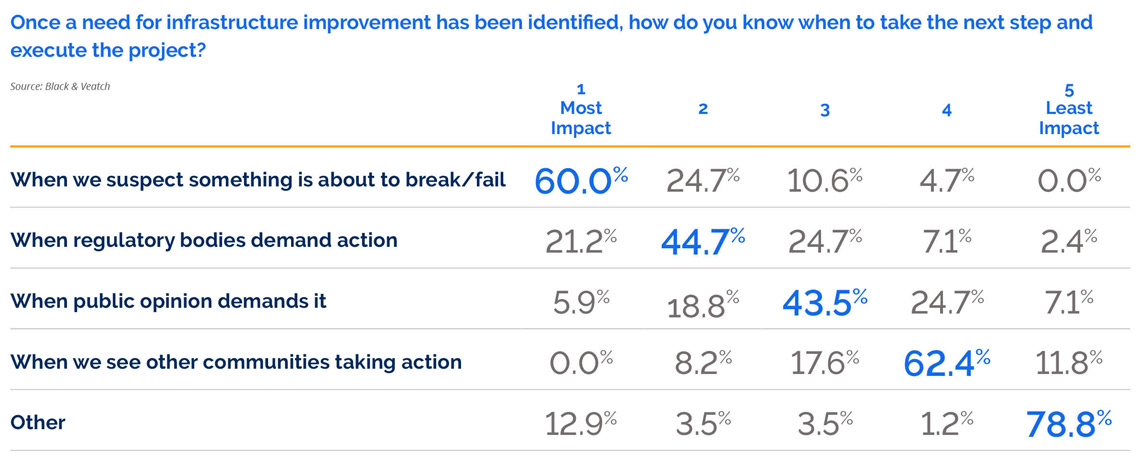
Unfortunately, this approach is flawed at best. According to the American Water Works Association (AWWA) and the ASCE, the U.S. experiences 240,000 water main breaks every year, wasting more than two trillion gallons of treated drinking water.
In general, America’s water infrastructure is old. Most of our one million miles of pipes were laid in the early- to mid-20th century. The Philadelphia Inquirer reports that the average age of Philadelphia’s sewers and water mains is 70 years, while Baltimore City Department of Public Works states that “many water lines are over 100 years old.”
In another study, Utah State University researchers analyzed nearly 200 water utilities in the U.S. and Canada to find that 16 percent of their mains had reached end-of-life; six years earlier, that number was 8 percent. This increase led to a 27-percent jump in breaks during the six years between the two studies.
Embracing Data Intelligence
Recognizing the age and frailty of the American water system – and the devastating impacts that breaks and ruptures have on the safety and quality of our drinking water – utilities are increasing their asset management efforts. Some are choosing to augment these endeavors with analytics.
ACSE emphasizes this point when they state, “To address deteriorating water infrastructure, asset management provides utility managers and decision‐makers with critical information on capital infrastructure assets and timing of investments. Some key steps for asset management include making an inventory of critical assets; evaluating their condition and performance; developing plans to maintain, repair, and replace assets; and funding these activities.”
Aging infrastructure is not just an issue in the U.S. To address a similar challenge in the United Kingdom, England’s largest water utility, Anglian Water, commissioned Black & Veatch to develop a digital representation of the region’s water treatment and distribution infrastructure.
This “digital twin” is embedded with artificial intelligence (AI) capabilities that enable predictive capabilities and intuitive decision support and intervention. What separates the digital twin from a conventional model is that the twin is in constant dialogue with its physical counterpart, enabling Anglian Water to run simulations and test options before implementing them in the real world.
Advanced technology like this offers a huge boon to utility intelligence, while also serving to address –and mitigate – one of the largest threats to industry organizational knowledge: retiring workers.
A Retiring Workforce
Survey data shows that more than a quarter of utility workers will be eligible for retirement within the next five years, and that number will only increase.
What happens when a utility’s most experienced people suddenly leave en masse? Experienced workers understand a system’s quirks, and that institutional knowledge follows them out the door. Survey data supports this, with 83 percent of respondents acknowledging that some tribal knowledge is lost when a worker leaves and 60 percent agreeing with the statement, “Our system has some peculiarities that only a small group know about” (Figure 3).
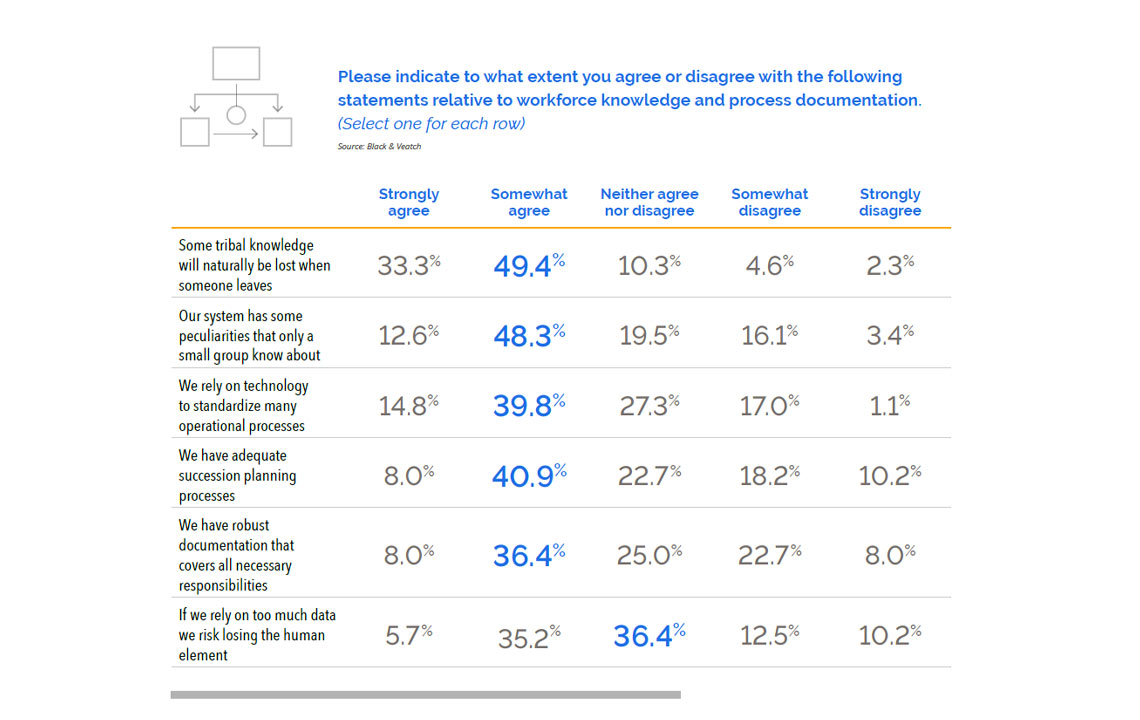
To add to this concern, less than half of respondents – 49 percent – have adequate succession planning processes, while only 44 percent said they have robust documentation processes in place.
The same is true for treatment systems. In recent discussions with utilities about risk and resilience assessments under America’s Water Infrastructure Act, we asked the question, “If you were without access to digital control systems or data, how well could you operate the system?” Several utilities would struggle to find the operations manual and have fewer experienced workers who could operate treatment works without advanced online control systems.
Changing Job Descriptions
Water utilities face an uphill climb when it comes to recruiting, particularly as the digital economy continues to grow and strengthen. The work is difficult – it takes a special commitment to rush outside to fix a ruptured pipe at 2 a.m. when it’s -5°F degrees and water is gushing all over the street.
Plus, with today’s evolving embrace of digital intelligence, many water utilities have had to change what they look for in new hires. According to the data, nearly 80 percent say digital savviness has become more important as utilities increasingly employ mobile workforce management systems and content management systems, which often require navigating on a mobile device such as a laptop or tablet (Figure 4).
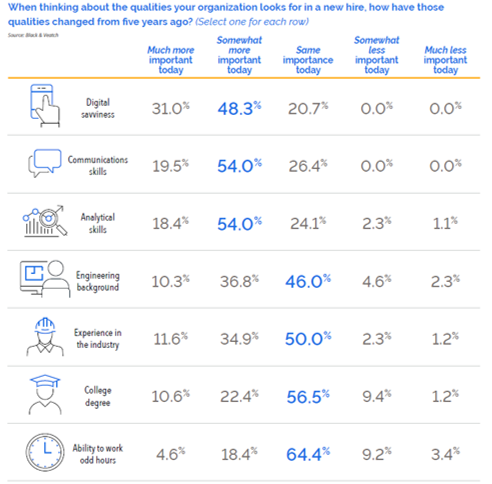 Communication skills are also desirable, according to 74 percent of respondents. Workers out in the field fixing a broken meter or pipe also serve as the public face of the utility, and poor communicators can reflect badly on the organization. Analytical skills also rate highly because these new workers need to learn on the fly, before their more experienced teammates retire.
Communication skills are also desirable, according to 74 percent of respondents. Workers out in the field fixing a broken meter or pipe also serve as the public face of the utility, and poor communicators can reflect badly on the organization. Analytical skills also rate highly because these new workers need to learn on the fly, before their more experienced teammates retire.
To attract workers with these skill sets, water utility managers are improving their recruitment efforts, with 78 percent increasing compensation and benefits, 59 percent focused on improving work/life balance, and 41 percent adding workplace perks (Figure 5).
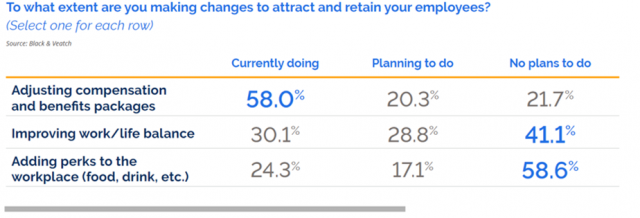 Looking Ahead
Looking Ahead
This data paired with market insights demonstrates that the water utility industry is at a turning point, as they face challenges both old (aging infrastructure assets) and new (an aging workforce and loss of institutional knowledge). These challenges – though daunting – are not impossible and would pose a unique situation for any essential service provider.
That said, deploying processes, procedures and technologies that help improve predictive capabilities, reduce operational inefficiencies and lower the risk of asset failures – paired with a growing recognition of the value that water services provide – will help ensure the reliability of systems for decades to come.
Analytics, digital twins, sensor deployments, metering and smart data modeling all provide new levels of insights that enable better, more informed decision-making. Although water utility work will never be considered easy, these advances can help complement institutional knowledge and bridge the gap left in a worker’s wake.
Robert Knee is principal consultant at Black & Veatch’s Management Consulting Group, where he provides organizational readiness and change management expertise, with a focus on changes associated with customer, workforce and asset management technology Implementations.
Will Williams is associate vice president of asset management for Black & Veatch’s water business. He has spent nearly three decades working in the United Kingdom, Australia, Europe, the Middle East and the United States implementing leading-edge asset management solutions for multi-sector utility clients.
Joe Zhou is senior managing director at Black & Veatch’s Management Consulting Group, where he leads the Business, Technology and Architecture Offering group that includes security and resilience, asset management and analytics to provide innovative and insightful consulting services to asset-intensive industries.

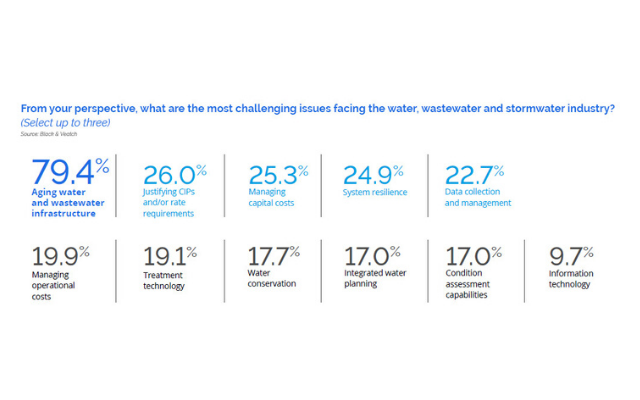


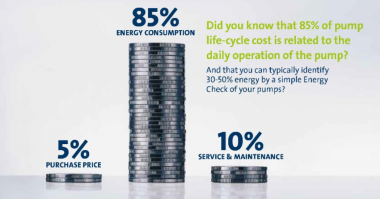
Comments